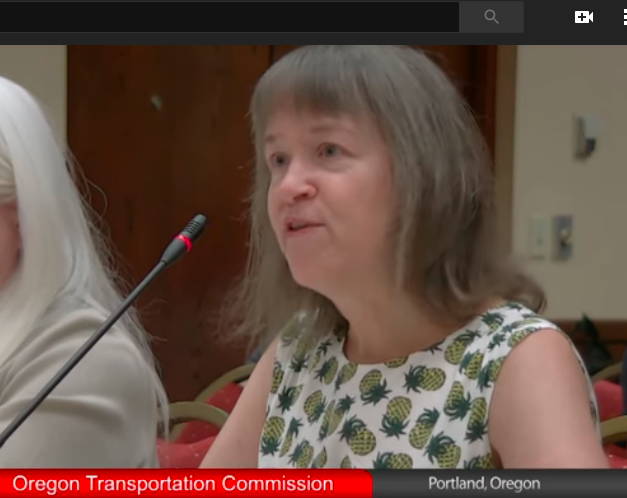Why congestion pricing makes sense for Portland
by Chris Hagerbaumer
Today, City Observatory is pleased to offer a guest commentary from Chris Hagerbaumer on value pricing. Chris is the deputy director of the Oregon Environmental Council. As we’ve reported at City Observatory, the Oregon Legislature directed the state’s transportation department to develop a plan to implement value pricing on the two principal interstate freeways in Portland: I-5 and I-205. Chris served as a member of the project’s public advisory committee.
The Oregon Transportation Commission heard public testimony earlier this month on the merits of congestion pricing. One of the proposed alternatives would add variable traffic-based tolls to all the existing lanes of these freeways. Chris’s testimony explains why pricing is a win-win-win solution for current traffic congestion woes: it’s the only method that’s been shown to reduce congestion, it saves billions in unneeded infrastructure costs, and will reduce pollution.
The question in front of you is: how do we actually solve congestion, solve it in a way that is the least cost to the taxpayer, and in a way that doesn’t result in more pollution. When we add more supply (in other words, build more roads) we end up exactly where we started when it comes to congestion (due to induced demand), we spend billions of taxpayer dollars (much of which comes from drivers who aren’t the ones demanding more road space), we harm surrounding communities as highways encroach into neighborhoods, and we pollute the air and heat up the planet.

Induced demand is the fact that when you add freeway capacity it induces longer trips, more sprawl and more driving. Traffic is like a gas, expanding to fit whatever space there is. In one infamous example, Texas spent nearly $2.8 billion expanding Katy Freeway to 26 lanes and congestion has actually worsened.
Building new roads is a supply-side solution that simply doesn’t work.
An effective, least-cost, environmentally sound way to address congestion is the proposal before you: congestion pricing to manage demand. Drivers pay an automated fee to enter highly congested roads at peak hours; in return, they travel smoothly and reliably, getting where they need to go on time. Prices are set at the lowest possible level to free up just enough road space to eliminate bottlenecks.
When you eliminate bottlenecks and get traffic flowing freely, you have—in essence—added capacity. You no longer need to add new lanes, your save taxpayers a bundle, and you reduce dangerous auto and truck exhaust.
Congestion pricing is a demand management solution that’s proven to work and does so in cities around the world. Drivers opposed congestion pricing at first: no one wants to pay more. But that opposition of 60% or more turned into support of 60% or more after congestion pricing was implemented. People’s opposition turned to support because they now get that it works—they experience the value.
Equitable application of congestion pricing absolutely requires mitigating diversion to local streets. But note that congestion pricing actually pulls many drivers who were already cutting through local roads back to the highway because those drivers who were stuck in traffic now have an option to get where they need to go, on time, for a small price.
Equitable application of congestion pricing also requires significantly increasing transit service and other travel options in the corridor and considering other means to make the system work for low-income commuters who must drive during peak hours, such as targeted discounts or exemptions.
We think of highways as free and we think of driving as freedom, but by investing almost solely in infrastructure for cars over most of the 20th century and into the 21st century, we created a transportation system that is costly not only for our pocketbooks, but for our very health and wellbeing and our region’s economic prosperity, a transportation system that contributes to the existential risk of runaway climate change.
You have an opportunity to make a decision that will lead to less time stuck in traffic, healthier air, and more economic prosperity for the region and state. We hope you embrace that opportunity.

